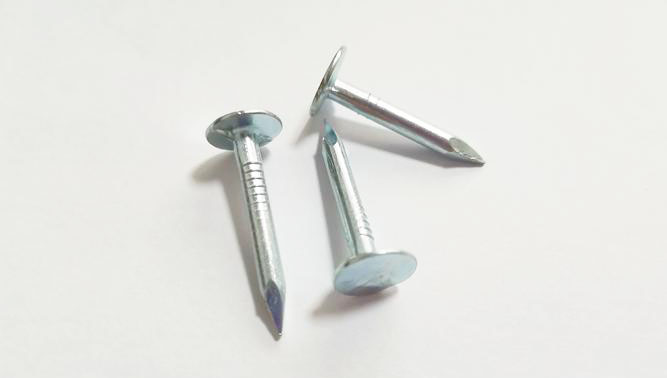Roofing Felt Nails: The "Invisible Guardians" in Waterproofing Projects, Small Nails Bearing Great Responsibility
In the field of building waterproofing engineering, roofing felt, as a traditional and reliable waterproof material, has long protected the dryness and safety of roofs and floors. The key "supporting role" that enables roofing felt to function effectively—roofing felt nails, though small in size, undertakes the core mission of securing roofing felt and ensuring the stability of the waterproofing system. They are indispensable basic components in waterproofing construction.
I. The "Customized Design" of Roofing Felt Nails: Born for Waterproofing
Roofing felt nails are not ordinary nails. Their structure and material are customized to meet the needs of "adapting to roofing felt and resisting moisture," with every design detail serving the reliability of waterproofing projects.
1. Material: Rust-Proof for Long-Term Durability
Roofing felt is in long-term contact with rainwater and moisture. If the nails used for fixation rust, they will not only lose their fixing force but also the rust may damage the waterproof structure of the roofing felt. Therefore, roofing felt nails are mostly made of two types of corrosion-resistant materials:
2. Shape: Adapted to Roofing Felt to Avoid Damage
Roofing felt has a relatively soft texture. Improper nail design can easily pierce the felt or cause uneven local stress, leading to water leakage risks. The shape design of roofing felt nails solves this problem effectively:
II. Application Scenarios of Roofing Felt Nails: Where Waterproofing is Needed, There They Are
From building roofs to underground spaces, as long as roofing felt waterproofing construction is involved, roofing felt nails play the role of "fixers." Although the application logic is consistent across different scenarios, there are specific focuses for each.
1. Roof Waterproofing: The "First Line of Defense" Against Wind and Rain
The roof is the area directly exposed to rainwater, and the fixing effect of roofing felt directly affects the waterproofing life of the roof. In roof felt laying, the use of roofing felt nails must follow the principle of "dense edges and key joints":
2. Floor Moisture-Proofing: Protecting the Dryness of Underground Spaces
Floors in basements, garages, warehouses, and other places are easily affected by underground moisture. When laying roofing felt moisture-proof layers, the role of roofing felt nails is to prevent the felt from shifting due to floor settlement, personnel movement, or equipment rolling:
3. Temporary Repairs: Quickly Containing Water Leakage Risks
When the roofing felt has local damage (such as small cracks or holes), roofing felt nails can be used for temporary repairs: cut a piece of felt patch slightly larger than the damaged area, cover it on the damaged part, and fix it along the edge of the patch with roofing felt nails. This can quickly prevent the water leakage problem from expanding and buy time for subsequent formal maintenance.
III. Common Misuses of Roofing Felt Nails: These Mistakes Will Render Waterproofing "Invalid"
Many construction workers ignore the details of using roofing felt nails, leading to hidden dangers in waterproofing projects. The following three common misunderstandings need to be avoided:
1. Random Nail Selection: Replacing Roofing Felt Nails with Ordinary Nails
Some people use ordinary iron nails or cement nails instead of roofing felt nails for convenience, but they are unaware that ordinary nails have no anti-corrosion design and will rust in a short period. This not only makes them lose their fixing force but also the rust will corrode the roofing felt, forming new water leakage points. In addition, the small nail caps of ordinary nails can easily pierce the roofing felt, directly damaging the waterproof structure.
2. Chaotic Spacing: Both Too Sparse and Too Dense Are Problematic
3. Improper Operation: Hitting Too Hard or at a Slant Angle
IV. Purchase and Storage of Roofing Felt Nails: Choose and Store Properly for Peace of Mind
To ensure roofing felt nails play their best role, attention to details is required in every step from purchase to storage.
1. Purchase: Choose Based on Scenarios and Check Quality
2. Storage: Keep Moisture-Proof and Prevent Collision
If roofing felt nails are not stored properly, they are prone to rust or deformation. The following points should be noted during storage:
Roofing felt nails, though seemingly insignificant, are actually the "lifeline" of the roofing felt waterproofing system. Every link, from their design, selection, and use to storage, directly affects the quality and service life of the waterproofing project. In building waterproofing construction, only by attaching importance to these "small nails" can roofing felt truly play the role of a "waterproof barrier" and protect the dryness and safety of the building.



 Send Email
Send Email